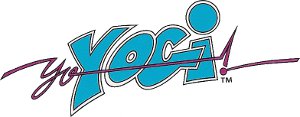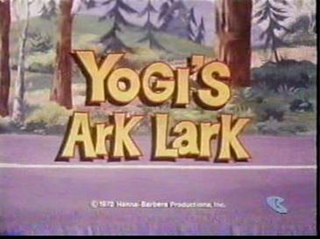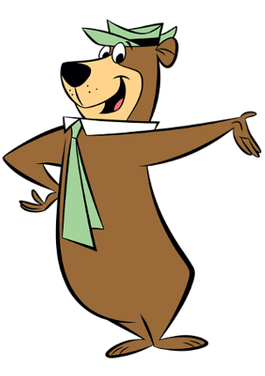
Charles Dawson Butler, professionally known as Daws Butler, was an American voice actor. He worked mostly for the Hanna-Barbera animation production company and the Walter Lantz cartoon studio. He originated the voices of many familiar Hanna-Barbera characters, including Yogi Bear, Huckleberry Hound, Snagglepuss, Quick Draw McGraw and Baba Looey, Auggie Doggie, Loopy De Loop, Wally Gator, Snooper and Blabber, Dixie and Mr. Jinks, Hokey Wolf, Lippy the Lion, Elroy Jetson, Peter Potamus, The Funky Phantom and Hair Bear. While at Walter Lantz, he did the voices of Chilly Willy, Smedley, Maxie the Polar Bear, Gooney, and Sam in the Maggie and Sam series.

Donald Earle Messick was an American voice actor, known for his performances in Hanna-Barbera cartoons.

Snagglepuss is a Hanna-Barbera cartoon character who debuted in prototype form in 1959 and established as a studio regular by 1961. A light pink anthropomorphic puma sporting an upturned collar, shirt cuffs, and bow tie, Snagglepuss enjoys the fine things in life and shows particular affinity for the theatre. His stories routinely break the fourth wall as the character addresses the audience in self-narration, soliloquy, and asides. As originally voiced by Daws Butler, Snagglepuss seeks quasi-Shakespearean turns of phrase. Some of his campy verbal mannerisms became catchphrases: "Heavens to Murgatroyd!", "Exit, stage left/right/up/down!", and a fondness for closing sentences with the emphatic "even".

Pixie and Dixie and Mr. Jinks is an animated television series produced by Hanna-Barbera Productions as part of The Huckleberry Hound Show from 1958 to 1961.

Hokey Wolf is an animated television series produced by Hanna-Barbera Productions as part of The Huckleberry Hound Show. It details the adventures of Hokey Wolf, a con-artist wolf who is always trying to cheat his way into the simple life. He is often accompanied alongside by his young, diminutive sidekick Ding-A-Ling Wolf, both of whom are featured as part of The Huckleberry Hound Show in their own segment.

Yogi's Gang is an American animated television series and the second incarnation of the Yogi Bear franchise, which aired 16 half-hour episodes on ABC from September 8, 1973, to December 29, 1973. The show began as Yogi's Ark Lark, a special TV movie on The ABC Saturday Superstar Movie in 1972. Fifteen original episodes were produced for broadcast on ABC, with the hour-long Yogi's Ark Lark thrown in as a split-in-half two-parter. The show confronted social and cultural issues like ecology and bigotry, with villains named Mr. Waste, Dr. Bigot, the Envy Brothers, Lotta Litter, the Greedy Genie and Mr. Cheater.

Yo Yogi! is an American animated television series and the seventh entry in the Yogi Bear franchise produced by Hanna-Barbera that aired from September 14 to December 7, 1991, on NBC for 13 episodes.

Yogi's Treasure Hunt is an American animated television series and the fifth entry in the Yogi Bear franchise produced by Hanna-Barbera Productions. Featuring Yogi Bear and various other Hanna-Barbera characters, it premiered in syndication in late 1985 as part of The Funtastic World of Hanna-Barbera. This is the last series to feature Daws Butler as the voice of Yogi Bear and his other characters before his death in 1988. It entirely used digital ink and paint across all three seasons, except its opening credits.

The Good, the Bad, and Huckleberry Hound is a 1988 animated Western television film produced by Hanna-Barbera for syndication as part of the Hanna-Barbera Superstars 10 series.

Fred Flintstone and Friends is an American animated anthology wheel series and a spin-off of The Flintstones produced by Hanna-Barbera and Columbia Pictures Television that aired in daily first-run syndication from September 12, 1977, to September 1, 1978. The series was packaged by Columbia Pictures Television during the 1977–78 television season and was available for barter syndication through Claster Television through the mid-1980s.

Boo-Boo Bear is a Hanna-Barbera cartoon character on The Yogi Bear Show. Boo-Boo is an anthropomorphic dwarf bear who wears a blue bowtie. Boo-Boo is Yogi Bear's constant companion, and often acts as his conscience. He tries to keep Yogi from doing things he should not do, and also to keep Yogi from getting into trouble with Ranger Smith – often saying, "Mr. Ranger isn't gonna like this, Yogi." It is not readily apparent whether Boo-Boo is a juvenile bear with a precocious intellect, or simply an adult bear who is short of stature.

Yogi's Ark Lark is a 1972 animated television special produced by Hanna-Barbera, intended to raise ecological awareness. It was broadcast on September 16, 1972, as part of The ABC Saturday Superstar Movie and served as the two-part episode for Yogi's Gang.

Yogi Bear's All Star Comedy Christmas Caper is a 1982 animated Christmas television special starring Yogi Bear. It is the third and final Yogi Christmas special. Produced by Hanna-Barbera, it first aired on December 21, 1982 on CBS. Along with Yogi's traditional cast, the characters also met up with many other Hanna-Barbera characters, including Magilla Gorilla and Fred Flintstone.
The Yogi Bear Show is a syndicated animated series by Hanna-Barbera Productions that aired between 1967 and 1968.

Huckleberry "Huck" Hound is a fictional cartoon character, a blue anthropomorphic coonhound dog that speaks with a North Carolina Southern drawl. He first appeared in the series The Huckleberry Hound Show. The cartoon was one of six TV shows to win an Emmy Award in 1960 as an "Outstanding Achievement in the Field of Children's Programming"; the first animated series to receive such an award.

Hanna-Barbera's 50th: A Yabba Dabba Doo Celebration is a 1989 American live-action/animated television special which premiered on TNT on July 17, 1989.
The Yogi Bear Show is an American comedy animated television series and the first entry of the Yogi Bear franchise produced by Hanna-Barbera Productions that centers on the misadventures of forest-dwelling Yogi Bear in Jellystone Park. The show debuted in syndication on January 30, 1961, and ran for 33 episodes until January 6, 1962. Two other segments for the show were Snagglepuss and Yakky Doodle. The show had a two-year production run.

Yogi Bear is an anthropomorphic animal character who has appeared in numerous comic books, animated television shows, and films. He made his debut in 1958 as a supporting character in The Huckleberry Hound Show.

Laff-A-Lympics is an American animated comedy television series produced by Hanna-Barbera. The series premiered as part of the Saturday-morning cartoon program block Scooby's All-Star Laff-A-Lympics which consists of 24 episodes, on ABC in 1977. The show is a spoof of the Olympics and the ABC primetime series Battle of the Network Stars, which debuted one year earlier. It featured 45 Hanna-Barbera characters organized into teams which competed each week for gold, silver, and bronze medals. In each episode, the Really Rottens would try in each event to cheat only to get caught by Snagglepuss each time. One season of 16 episodes was produced in 1977–78, and eight new episodes combined with reruns for the 1978–79 season as Scooby's All-Stars. Unlike most cartoon series produced by Hanna-Barbera in the 1970s, Laff-A-Lympics did not contain a laugh track. Scooby’s Laff-a-Lympics was originally owned by Taft Broadcasting, Warner Bros. Domestic Television Distribution currently owns the series through its two in-name-only units, Warner Bros. Family Entertainment and Turner Entertainment.

















